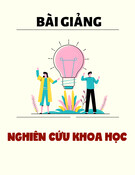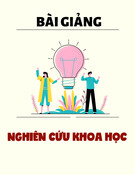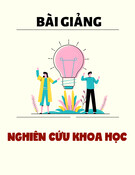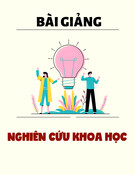
290
HNUE JOURNAL OF SCIENCE
Educational Sciences 2024, Volume 69, Issue 5A, pp. 290-301
This paper is available online at https://hnuejs.edu.vn/es
DOI: 10.18173/2354-1075.2024-0104
SUSTAINABILITY AND REPRODUCIBILITY OF INCLUSIVE ONLINE SPORTS
CLUB ACTIVITY BETWEEN UNIVERSITY JAVELIN COACHES
AND AN ATHLETE WITH MILD INTELLECTUAL DISABILITY
AND AUTISM SPECTRUM DISORDERS
Matsuyama Naoki*1 and Shigeta Susumu2
1Center for Open Innovation in Education, Tokyo Gakugei University, Japan
2Faculty of Education, Tokyo Gakugei University, Japan
*Coressponding author Naoki Matsuyama, e-mail: manatsu@u-gakugei.ac.jp
Received November 14, 2024. Revised December 2, 2024. Accepted December 13, 2024.
Abstract. Through a year-long case study, this study examines the sustainability and
reproducibility of the “Inclusive Online Sports Club Activity (IOSCA)”. It involves online
coaching via ICT devices between university students specializing in physical education and
special needs education and a javelin throw athlete with Mild ID and ASD who lived in a
rural area. A recent policy shift in Japan is transferring school sports activities to community-
based programs, particularly relevant for rural areas where coach shortages are prevalent.
Online sports club activities connecting urban and rural areas are a promising solution to this
issue. To address both the shortage of coaches and the need for quality instruction, this study
applied the “University Student Online Coaching Model,” where university students act as
online coaches, supported by the “Double Coaching System,” which provides mentorship
and professional development for these students. The athlete's performance improved from
42.80 meters to 47.03 meters, highlighting the effectiveness of using university students as
online coaches. Additionally, the study emphasizes that engaging students from teacher
training and sports universities nationwide could help alleviate coach shortages. The research
also demonstrated that the ICT-based setup for IOSCA reduced running costs by 93.38% and
initial costs by 48%, compared to traditional methods. These results suggest that combining
the “University Student Online Coaching Model,” the “Double Coaching System,” and a
low-cost ICT environment offers a sustainable and reproducible solution for connecting
urban and rural areas through IOSCA.
Keywords Remote Coaching; ICT; track and field; Japan’s Sports Policy; Professional
Development, IOSCA.
1. Introduction
In Japan, sports activities for junior high, high school, and special needs students have
traditionally been organized through “Club Activity” (Bukatsudou) programs, which are
school-based. These activities, defined in the national curriculum guidelines, allow students to
engage in voluntary sports or cultural activities under teacher supervision after school hours
[1]. The purpose of these sports clubs is not only to enhance physical skills and fitness but also
to cultivate important values such as teamwork, fairness, discipline, self-control, and practical
thinking [2]. Club activities are currently implemented in almost all junior high and high
schools across the country.

Sustainability and reproducibility of inclusive online sports club activity…
291
However, not all schools have teachers who are proficient in coaching specific sports. For
instance, in 2014, 52.1% of junior high school teachers and 44.9% of high school teachers
supervising sports activities had no experience in the sport they were responsible for [3]. This
lack of expertise places additional burdens on teachers, who are often expected to provide
specialized sports coaching despite their limited experience [4]. Furthermore, because club
activities are conducted after school or on weekends, concerns have been raised about the
extended working hours of teachers [5]. In response, Japan introduced a policy in 2022 to
gradually shift school-based club activities to community-based programs by 2025 [6].
This transition aims to reduce teachers’ workload by transferring club activities, particularly
those at junior high schools and special needs schools, to local community organizations. By
2025, weekend club activities will be fully transitioned to local communities, with weekday
activities following soon after. The Japan Sports Agency [7] hopes that this transition will create a
more inclusive sports environment, where students from special needs schools and mainstream
schools can participate together [8][9]. However, challenges remain, especially in rural areas, such
as mountainous regions and remote islands, where a shortage of qualified coaches persists [10].
To address this issue, recent studies have explored the potential of “online sports club
activities,” where coaches in urban areas use ICT tools to remotely instruct students in rural areas
[11]. Several case studies have been conducted to evaluate this model, such as the remote
coaching of badminton and dance students on Okinawa’s remote islands and the online instruction
of track and field athletes with intellectual disabilities in rural areas [12][13][14]. However, the
issues of coach quality, availability, sustainability, and reproducibility remain unresolved [15].
This study proposes a solution through the “University Student Online Coaching Model,”
where university students majoring in physical education (PE) and special needs education serve
as online coaches for rural students. This model leverages the potential of university students from
teacher training institutions across Japan to provide coaching through ICT devices. This study
implements a year-long case study involving three university student coaches specializing in
javelin throw. They will coach an athlete with intellectual disabilities (ID) and autism spectrum
disorder (ASD) at a rural special needs school through an “Inclusive Online Sports Club Activity”
(IOSCA). The study will evaluate the sustainability and reproducibility of this model, focusing
on coach quality and cost-effectiveness.
2. Content
2.1. Research Methodology
This study explores the implementation of the “Inclusive Online Sports Club Activity”
(IOSCA) using ICT equipment and the “University Student Online Coaching Model.” The online
coaches consisted of three university students majoring in physical education, who are also javelin
throw athletes from a teacher training university in an urban area. The athlete being coached is a
high school student with mild ID and ASD, living in a rural area and attending a special needs
school. The detailed methodology is explained below.
ICT Environment Setup for IOSCA
Given that track and field events like javelin throw involve considerable movement, this
study adopts the low-cost, long-term online sports club activity model proposed by Matsuyama
[13]. This model integrates ICT devices with video conferencing software (Zoom by Zoom
Corporation) and an AI-powered auto-tracking tripod (AAT) manufactured by Remo Tech Co.,
Ltd. The AAT ensures that the movements of both the coach and athlete remain within the camera
frame, solving the issue of “framing out” which is common in dynamic sports (Figure 1)※1.
To ensure seamless communication even when coaches and athletes move away from the
camera, Matsuyama [13] also recommended using wireless earphones with built-in microphones.

Matsuyama N* & Shigeta S
292
For this study, since the coaching team consisted of two coaches per session, we utilized wireless
earphones with separate left and right functionality, allowing each coach to wear one earbud for
clear communication (Figure 2).
Figure 1. ICT Environment Setup Using
AAT for IOSCA
Figure 2. Wireless Earphone Setup
for Dual-Coach Communication
Additionally, to provide reasonable accommodations for an athlete with intellectual
disabilities, this study follows the approach of using an online training log, as suggested by
Matsuyama [12]. Reflecting on the training process through journaling has proven to be an
effective method for mastering skills [16]. However, athletes with ID often face difficulties in
documenting their experiences and insights, which hinders their skill acquisition [12][13].
To address this, Matsuyama [12] introduced a method where the athlete and coach reflect on
training experiences together, summarizing key learning points through dialogue. This
information is then recorded in the online log. Based on this approach, this study plans to use an
online training log to assist the athlete in reviewing and organizing their training experiences.
2.2. Participants
2.2.1. IOSCA Participant: Athlete A
Athlete A is a 16-year-old male student in his second year at a special needs high school in
a rural area. He has been diagnosed with mild ID and ASD by a medical institution and holds a
“Ryoiku Techo B” disability certificate from his local government※2.
Regarding his sports history, athlete A attended a regular junior high school until the second
grade, where he participated in the school's baseball club activity. However, due to his ID, he
required academic support, and his ASD made communication with others challenging. As a
result, he transferred to a special needs school in the third year of junior high school at the age of
15. Since he had an interest in throwing, developed from his baseball experience, athlete A
became interested in javelin throw and began practicing it as a sport club activity upon entering
high school.
After joining the high school, athlete A has participated in various competitions, including
the Special Olympics for athletes with ID and regional competitions for students without
disabilities, achieving notable results. However, his special needs school does not have a qualified
track and field coach, and thus, athlete A lacked specialized coaching. As a result, he previously
received online coaching for four months during his first year and for two months in his second
year of high school from the author of this study, a specialist in coaching athletes with disabilities.
athlete A has a strong competitive drive, with goals to update his personal best and rank in the top

Sustainability and reproducibility of inclusive online sports club activity…
293
eight in prefectural competitions against able-bodied high school students. He also aspires to
continue as a javelin throw athlete in the future.
Given athlete A's background and the policy context of transferring school club activities to
local communities, it was decided that athlete A would receive online coaching from university
students specializing in javelin throw at a nearby athletic stadium as part of his extracurricular
activities. At the time of this study, his personal best in the javelin throw was 42.80 meters.
2.2.2. IOSCA Coaches: Coaches A, B, C, D
Four university students (hereafter Coaches A, B, C, and D) from a teacher training
university in an urban area are recruited as online coaches for this study. Coaches A, B, and C are
male javelin throw athletes from the university's track and field team. Coach A is a first-year
student majoring in physical education and has competed in the national high school competition
(personal best: 56m69cm). Coach B is a second-year student majoring in physical education and
has competed in the regional block competition (personal best: 55m13cm). Coach C is a first-year
student majoring in Japanese education and placed sixth in the national high school competition
(personal best: 61m71cm).
None of these coaches had prior experience in coaching athletes, nor did they have any
knowledge of special needs education. To support their coaching and ensure quality instruction,
Coach D, a female discus throw athlete from the same university who is studying special needs
education, is included in the team to assist Coaches A, B, and C.
2.2.3. Ensuring Coaching Quality through the “Double Coaching Framework”
Typically, teacher training universities and physical education universities offer curricula
that provide basic knowledge about physical education and sports instruction, including practical
skills, based on scientific understanding. However, several previous studies have pointed out that
while these curricula clarify scientific knowledge, they often lack direct practical application in
coaching scenarios [17][18][19]. Similarly, Coaches A, B, and C in this study, despite their
involvement in sports, lacked practical experience in consistently coaching specific athletes,
particularly those with disabilities. Therefore, to ensure the quality of instruction provided by
Coaches A, B, and C, as well as Coach D, a structured method of supporting their professional
development was necessary.
Figure 3. The Double Coaching Framework
One effective approach to professional development, as identified in previous research,
includes a combination of practical coaching experience and mentorship support※3. The first
aspect involves gaining practical knowledge by actively coaching athletes and facing real-world

Matsuyama N* & Shigeta S
294
challenges in coaching [20][21] [22]. The second aspect involves the mentor providing guidance,
offering coaching examples, and giving feedback on the coaches’ methods, which helps facilitate
professional growth. Based on these principles, this study utilized the “Double Coaching
Framework” [15] to ensure the coaching quality of Coaches A, B, C, and D through a combination
of mentorship and practical coaching experience with athlete A (see Figure 3).
The “Double Coaching Framework” consists of two components. The first involves Coaches A,
B, C, and D learning coaching methods from an experienced mentor. The second involves Coaches
A, B, C, and D applying these methods while providing online javelin coaching to athlete A.
In the first component, the following four activities were planned to support the professional
development of Coaches A, B, C, and D:
• Monthly meetings are held between the mentor and the coaches to discuss and align their
coaching strategies. Rather than the mentor unilaterally providing directives, these meetings
encourage coaches to share their views, which helps inform and refine their coaching approach.
• The mentor regularly conducted online coaching sessions with athlete A, recording these
sessions for the coaches to use as instructional examples.
• The mentor participates in real-time during online coaching sessions, answering any
questions the coaches have on the spot.
• After each session, the mentor provides feedback to the coaches. If deemed necessary,
the mentor also offers advice before upcoming sessions.
• In the second component, the coaches applied the advice and strategies from the
mentorship sessions to their practical online coaching sessions with athlete A.
The mentor, who is the author of this study, had prior experience coaching athlete A and is
also a faculty member at the teacher training university. Additionally, the mentor facilitates the
use of an online training log and provides materials to aid in instruction.
2.2.4. Frequency of Implementation
This study plans for 45 sessions of IOSCA, conducted once a week for 2 hours. Each session
involved two coaches: one main coach, selected from Coaches A, B, or C, and a supporting coach,
Coach D. During the first month, the researcher also participates in the sessions to help with ICT
setup and coaching techniques, with 3 or 4 coaches assisting in each session.
If athlete A is ill or if weather conditions are unsuitable in the area where the athlete trains,
IOSCA is canceled. In cases where a coach is unavailable due to illness or schedule conflicts,
another coach or mentor would substitute. When the mentor substitutes, the session is recorded
and shared with Coaches A, B, C, and D as a professional development opportunity to learn from
the mentor’s coaching approach.
2.2.5. Administrative Functions
This study anticipates an increase in IOSCA participants and coaches in the future and, to
manage this growth plans to outsource administrative functions. From this anticipation, this study
uses the “Club Activity Support Service” by Kinki Nippon Tourist Co., Ltd. The service handles
tasks such as coordinating the schedules of Coaches A, B, C, D, and Athlete A, setting up the
video conferencing application during IOSCA sessions, and monitoring the sessions in real-time
to ensure that no verbal abuse or other misconduct occurred.
2.2.6. Data Collection
This study collected three main types of data to evaluate the IOSCA program. First, the total
number of IOSCA sessions conducted is recorded. Second, the overall costs associated with the
project are tracked, including any expenses incurred for equipment, coaching, and administration.
Finally, athlete A’s javelin throw performance before and after the IOSCA implementation is
measured. By analyzing this data, the study aims to assess the sustainability and reproducibility




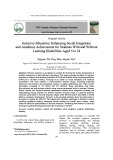

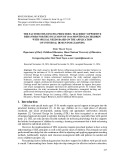


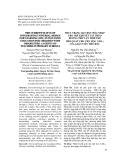

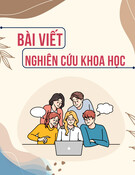
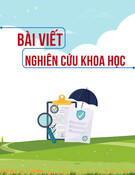
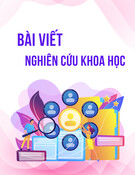
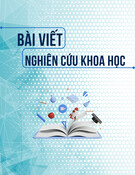
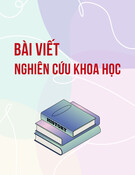
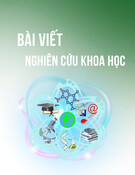
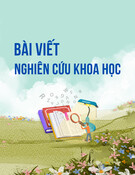
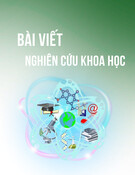
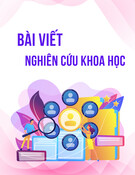
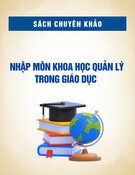
![Định hướng giáo dục STEM trong trường trung học: Tài liệu [chuẩn/mới nhất]](https://cdn.tailieu.vn/images/document/thumbnail/2025/20251124/dbui65015@gmail.com/135x160/25561764038505.jpg)
